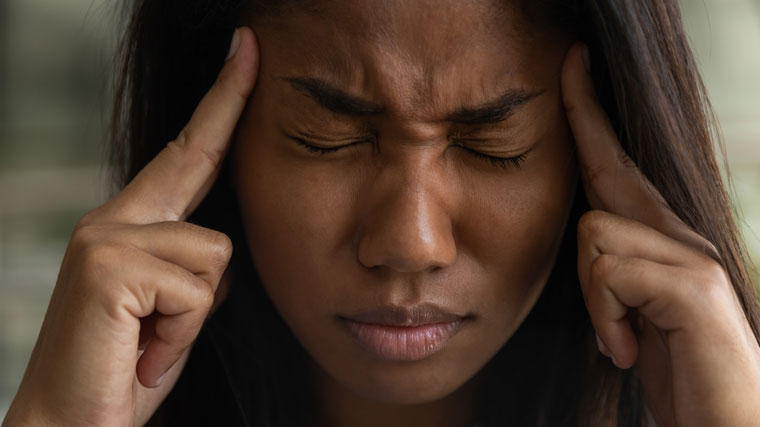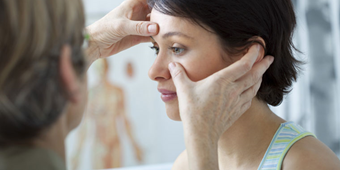Migraines Remain One Of the Top Disabling Disorders Across the Globe

Answer a few questions and we'll provide you with a list of primary care providers that best fit your needs.
Migraine headaches land millions of Americans in the emergency department each year only to force them to cope with the serious pain in a public setting.
Most of those who seek relief in an ER, however, can avoid the trip if they know how to best treat their migraine attack at its onset in their own home, according to the Agency for Healthcare Research and Quality.
A migraine is a primary headache disorder in which the brain shifts into a hyper-excitable state. Stimuli such as stress, odors, bright lights, weather changes, and food can trigger a migraine. Migraines are severe headaches that often occur on one side of the head, but they are characterized by much more than pain, says Richard Kim, MD, an internal medicine physician who specializes in headaches with the Clinical Neuroscience Institute.
“Migraines are not just a headache as many people think,” says Dr. Kim. “It also includes other symptoms such as sensitivity to light, sounds, and smells; nausea; vomiting; and sometimes visual disturbances such as the appearance of bright spots or zig zag lines.”
It is estimated that 37 million Americans suffer from migraines – a health issue that the World Health Organization lists as one of the top six disabling disorders in the world. Migraines are diagnosed when a person has experienced recurrent headaches that exhibit symptoms anywhere from four to 72 hours. A proper diagnosis of migraine is a vital first step to successfully treating it at home, Dr. Kim says.
“Symptoms of a migraine can mirror other serious health issues such as a stroke,” says Dr. Kim. “This is one of the main reasons an individual may go to an ER for a headache, and it’s important to have that ruled out. But an ER can be avoided by those who are familiar with their migraine symptoms and who have been diagnosed with the headache disorder by a physician.”
Dr. Kim says that migraine headaches with an aura can mimic the symptoms of stroke, which can be alarming, but he advises how to tell the difference and when to be concerned.
Click play to watch the video or read video transcript.
Treating a Migraine At Home
Dr. Kim says the following steps can help migraine sufferers care for their headache at home:
Create a plan. Have your migraine diagnosed by a physician and create a plan with that provider to follow when migraine symptoms arise. Determine what medications are best depending on the severity of the headache. This includes medication that prevents a headache, medication that keeps a migraine from getting worse, or rescue medication that can be used when all else fails.
Don’t wait. Don’t skip your dosage of preventive medication and don’t wait to take medication when migraine symptoms begin. “The longer you wait to take your migraine medication during an attack the less effective it will be,” Dr. Kim says. “Some people may wait to see if the headache will pass, but the longer you wait, the harder it will be to treat.”
Change your environment. Stay home during a migraine attack and try to remain still in a dark, quiet room. Drink plenty of fluids to remain hydrated and apply cold or moist ice packs to your forehead, temple, or back of your neck.
Know when to seek help. There are times when extra help is needed. A migraine attack that involves vomiting or diarrhea can keep you from taking medication and can leave you dehydrated. If you're in this situation should seek medical help. Headaches that come on suddenly or are different than the ones experienced in the past should be evaluated by a professional as soon as possible, Dr. Kim says.
Answer a few questions and we'll provide you with a list of primary care providers that best fit your needs.
Source: Richard Kim, MD, Clinical Neuroscience Institute; Agency for Healthcare Research and Quality; World Health Organization






